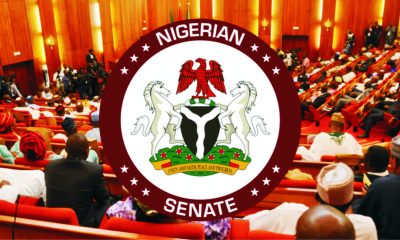Oil & Energy
Global Energy Advisory Deals, Mergers And Acquisitions
A United States Appeals court has dismissed the lawsuit Canadian mine Crystallex brought against Venezuela’s PDVSA, seeking to take control over its U.S. business, Citgo, as compensation for the nationalisation of assets under the late Hugo Chavez. A World Bank tribunal had awarded Crystallex $1.2 billion plus interest in 2016 but Venezuela has only made part of the payments. Contrary to Crystallex’s hopes, the court this time sided with the Venezuelan attorneys, who argued PDVSA and Citgo are entities separate from the country, which was the defendant in the original lawsuit.
Russian Alrosa, the world’s top producer of rough diamonds has put up for sale gas assets in the Yamal-Nenets region, in northwestern Siberia, which Novatek plans to bid for next month. The starting price of the package is $520 million. In December, Novatek launched the first shipment of LNG from its Arctic LNG project, also in Yamal-Nenets.
Shell has finalized the first phase of the divestment of its LPG marketing business in Hong Kong and Macau for $150 million. The buyer of the company is DCC, the international sales and marketing group. The supermajor will remain operator of the Hong Kong LPG plant. Its sale will be completed in the second phase of the divestment plan.
Suncor and Teck Resources have settled a commercial dispute over the Fort Hills oil sands project by raising their stakes in it. Suncor will now hold 53.06% in Fort Hills, up from 50.8%, and Teck will have a 20.89% interest, up from 20%. The two companies are partners with Total in the Fort Hills project.
Tenders, Auctions & Contracts
Tullow Oil’s Ghana unit has awarded Danish Maersk Drilling a four-year contract for the Maersk Venturer drillship, to be deployed at the Jubilee and TEN fields offshore Ghana. The two are among the most promising new fields discovered in Africa in the last few years
Discovery & Development
Spain’s Repsol has begun commercial production from the Sagari natural gas field in Peru. The field, according to Repsol, will produce 5.6 million cum of gas daily, which will represent a quarter of Peru’s natural gas demand. The launch of production at the field will also raise the overall output from Block 57, in which it is located, by a fourth. The Sagari field holds an estimated at 1-2 trillion cu ft of gas.
Transneft has completed the expansion of the East Siberia-Pacific Ocean crude oil pipeline, doubling the export capacity for China to 30 million tons of crude annually or an average 600,000 barrels daily. China has become the world’s top crude oil importer and Russia last year became its largest supplier, overtaking Saudi Arabia.
TransCanada has commissioned the construction of the Leach Xpress natural gas pipeline that will run between West Virginia and Ohio. The $1.6-billion project will have a capacity to transport some 1.5 billion cubic feet of gas daily from the Appalachian fields to the national market. In addition to this news, TransCanada also said this week the FERC had greenlit another two gas projects: the Mountaneer Xpress and the Gulf Xpress. The two will cost a combined $3.2 billion.
The U.S. administration has plans to open up more Arctic and Atlantic waters for oil and gas exploration, cancelling the five-year leasing programme approved by the Obama administration. This could offer explorers a lot more drilling opportunities, although it remains doubtful to what extent they would be willing to exploit the opportunity in the face of high offshore project development costs and strong environmental opposition.
Company News
Petrobras has agreed to cough up almost $3 billion to put an end to shareholder lawsuit it got hit with because of its involvement in what has turned out to be a major corruption scandal that toppled former Brazil president Dilma Roussef. As part of the investigation into the corruption scheme, senior Petrobras executives were implicated of receiving bribes in exchange for inflating the prices for services performed by companies working for Petrobras.
Source: Oilprice Report For 5/01/2018
Oil & Energy
FG Woos IOCs On Energy Growth
The Federal Government has expressed optimism in attracting more investments by International Oil Companies (IOCs) into Nigeria to foster growth and sustainability in the energy sector.
This is as some IOCs, particularly Shell and TotalEnergies, had announced plans to divest some of their assets from the country.
Recall that Shell in January, 2024 had said it would sell the Shell Petroleum Development Company of Nigeria Limited (SPDC) to Renaissance.
According to the Minister of State for Petroleum Resources (Oil), Heineken Lokpobiri, increasing investments by IOCs as well as boosting crude production to enhancing Nigeria’s position as a leading player in the global energy market, are the key objectives of the Government.
Lokpobiri emphasized the Ministry’s willingness to collaborate with State Governments, particularly Bayelsa State, in advancing energy sector transformation efforts.
The Minister, who stressed the importance of cooperation in achieving shared goals said, “we are open to partnerships with Bayelsa State Government for mutual progress”.
In response to Governor Douye Diri’s appeal for Ministry intervention in restoring the Atala Oil Field belonging to Bayelsa State, the Minister assured prompt attention to the matter.
He said, “We will look into the issue promptly and ensure fairness and equity in addressing state concerns”.
Lokpobiri explained that the Bayelsa State Governor, Douyi Diri’s visit reaffirmed the commitment of both the Federal and State Government’s readiness to work together towards a sustainable, inclusive, and prosperous energy future for Nigeria.
While speaking, Governor Diri commended the Minister for his remarkable performance in revitalisng the nation’s energy sector.
Oil & Energy
Your Investment Is Safe, FG Tells Investors In Gas
The Federal Government has assured investors in the nation’s gas sector of the security and safety of their investments.
Minister of State for Petroleum Resources (Gas), Ekperikpe Ekpo, gave the assurance while hosting top officials of Shanghai Huayi Energy Chemical Company Group of China (HUAYI) and China Road and Bridge Corporation, who are strategic investors in Brass Methanol and Gas Hub Project in Bayelsa State.
The Minister in a statement stressed that Nigeria was open for investments and investors, insisting that present and prospective foreign investors have no need to entertain fear on the safety of their investment.
Describing the Brass project as one critical project of the President Bola Tinubu-led administration, Ekpo said.
“The Federal Government is committed to developing Nigeria’s gas reserves through projects such as the Brass Methanol project, which presents an opportunity for the diversification of Nigeria’s economy.
“It is for this and other reasons that the project has been accorded the significant concessions (or support) that it enjoys from the government.
“Let me, therefore, assure you of the strong commitment of our government to the security and safety of yours and other investments as we have continually done for similar Chinese investments in Nigeria through the years”, he added.
Ekpo further tasked investors and contractors working on the project to double their efforts, saying, “I want to see this project running for the good of Nigeria and its investors”.
Earlier in his speech, Leader of the Chinese delegation, Mr Zheng Bi Jun, said the visit to the country was to carry out feasibility studies for investments in methanol projects.
On his part, the Managing Director of Brass Fertiliser and Petrochemical Ltd, Mr Ben Okoye, expressed optimism in partnering with genuine investors on the project.
Oil & Energy
Oil Prices Record Second Monthly Gain
Crude oil prices recently logged their second monthly gain in a row as OPEC+ extended their supply curb deal until the end of Q2 2024.
The gains have been considerable, with WTI adding about $7 per barrel over the month of February.
Yet a lot of analysts remain bearish about the commodity’s prospects. In fact, they believe that there is enough oil supply globally to keep Brent around $81 this year and WTI at some $76.50, according to a Reuters poll.
Yet, like last year in U.S. shale showed, there is always the possibility of a major surprise.
According to the respondents in that poll, what’s keeping prices tame is, first, the fact that the Red Sea crisis has not yet affected oil shipments in the region, thanks to alternative routes.
The second reason cited by the analysts is OPEC+ spare capacity, which has increased, thanks to the cuts.
“Spare capacity has reached a multi-year high, which will keep overall market sentiment under pressure over the coming months”, senior analyst, Florian Grunberger, told Reuters.
The perception of ample spare capacity is definitely one factor keeping traders and analysts bearish as they assume this capacity would be put into operation as soon as the market needs it. This may well be an incorrect assumption.
Saudi Arabia and OPEC have given multiple signs that they would only release more production if prices are to their liking, and if cuts are getting extended, then current prices are not to OPEC’s liking yet.
There is more, too. The Saudis, which are cutting the most and have the greatest spare capacity at around 3 million barrels daily right now, are acutely aware that the moment they release additional supply, prices will plunge.
Therefore, the chance of Saudi cuts being reversed anytime soon is pretty slim.
Then there is the U.S. oil production factor. Last year, analysts expected modest output additions from the shale patch because the rig count remained consistently lower than what it was during the strongest shale boom years.
That assumption proved wrong as drillers made substantial gains in well productivity that pushed total production to yet another record.
Perhaps a bit oddly, analysts are once again making a bold assumption for this year: that the productivity gains will continue at the same rate this year as well.
The Energy Information Administration disagrees. In its latest Short-Term Energy Outlook, the authority estimated that U.S. oil output had reached a record high of 13.3 million barrels daily that in January fell to 12.6 million bpd due to harsh winter weather.
For the rest of the year, however, the EIA has forecast a production level remaining around the December record, which will only be broken in February 2025.
Oil demand, meanwhile, will be growing. Wood Mackenzie recently predicted 2024 demand growth at 1.9 million barrels daily.
OPEC sees this year’s demand growth at 2.25 million barrels daily. The IEA is, as usual, the most modest in its expectations, seeing 2024 demand for oil grow by 1.2 million bpd.
With OPEC+ keeping a lid on production and U.S. production remaining largely flat on 2023, if the EIA is correct, a tightening of the supply situation is only a matter of time. Indeed, some are predicting that already.
Natural resource-focused investors Goehring and Rozencwajg recently released their latest market outlook, in which they warned that the oil market may already be in a structural deficit, to manifest later this year.
They also noted a change in the methodology that the EIA uses to estimate oil production, which may well have led to a serious overestimation of production growth.
The discrepancy between actual and reported production, Goehring and Rozencwajg said, could be so significant that the EIA may be estimating growth where there’s a production decline.
So, on the one hand, some pretty important assumptions are being made about demand, namely, that it will grow more slowly this year than it did last year.
This assumption is based on another one, by the way, and this is the assumption that EV sales will rise as strongly as they did last year, when they failed to make a dent in oil demand growth, and kill some oil demand.
On the other hand, there is the assumption that U.S. drillers will keep drilling like they did last year. What would motivate such a development is unclear, besides the expectation that Europe will take in even more U.S. crude this year than it already is.
This is a much safer assumption than the one about demand, by the way. And yet, there are indications from the U.S. oil industry that there will be no pumping at will this year. There will be more production discipline.
Predicting oil prices accurately, even over the shortest of periods, is as safe as flipping a coin. With the number of variables at play at any moment, accurate predictions are usually little more than a fluke, especially when perceptions play such an outsized role in price movements.
One thing is for sure, though. There may be surprises this year in oil.
lrina Slav
Slav writes for Oilprice.com.
-

 News5 days ago
News5 days agoWDD: Tinubu Seeks Global Action On Drug Abuse
-

 Featured4 days ago
Featured4 days agoTinubu Signs Four Tax Reform Bills Into Law …Says Nigeria Open For Business
-
Sports5 days ago
RSG Advises Rivers Angels, Players, Mgt To Work As A Team …Tasks Them To Win The Final
-
Nation5 days ago
FG Restates Commitment To Seafarers’ Welfare, Safety
-
Rivers5 days ago
Students Praise Old Boys/Girls 83 Set Over African Child Day Celebration
-

 Featured5 days ago
Featured5 days agoSenate Issues 10-Day Ultimatum As NNPCL Dodges ?210trn Audit Hearing
-

 News5 days ago
News5 days agoTinubu Rejects NDLEA Bill Over Crime Proceeds Clause
-

 News4 days ago
News4 days agoShettima In Ethiopia For State Visit

